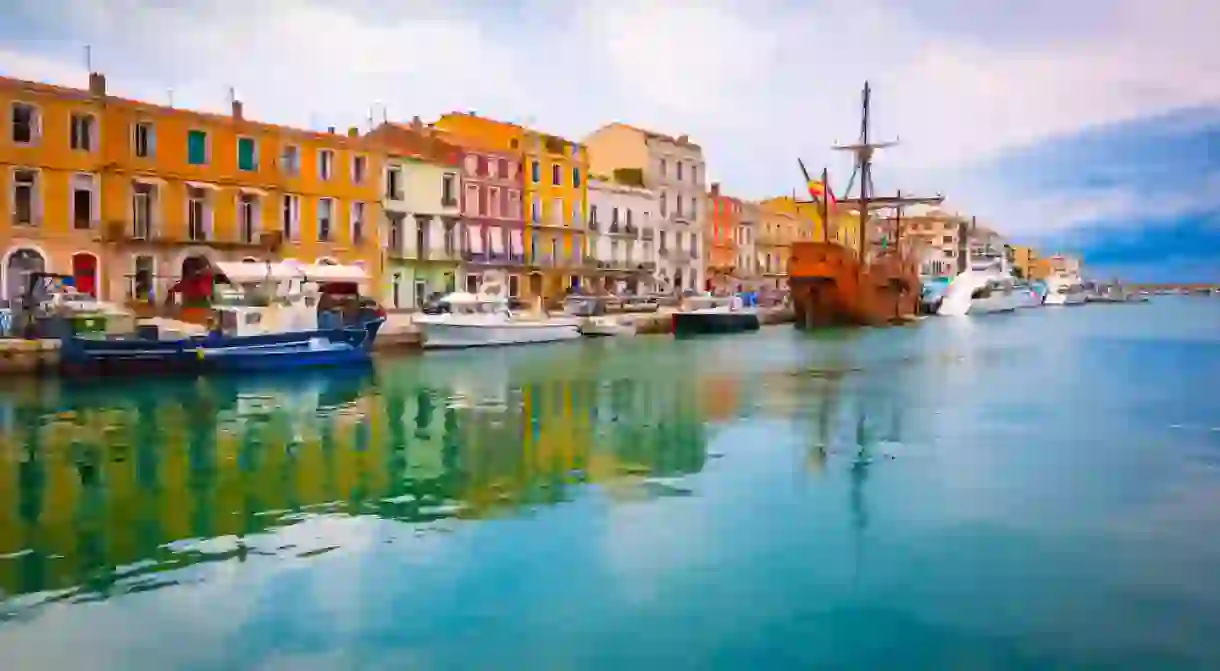The 8 Best Things to Do in Sète

The Mediterranean port city of Sète is a real hidden gem in the South of France. Often overshadowed by the coastal towns on the French Riviera to its east, Sète – with its beach-side evenings and Languedoc cuisine – has managed to retain its charm and traditions while still being a delight for visitors. Here are the activities that you simply shouldn’t pass up during your time in the ‘Little Venice’ of the Languedoc.
Climb Mont Saint-Clair
Natural Feature

For panoramic views of the city – its labyrinth of canals, the large lagoon to the west and the Mediterranean to the east – climb Mont Saint-Clair, a small mountain that rises just behind Sète. There are information signs at the top taking visitors through the history of the different landmarks. If travelling by car, get here early as nearby parking is limited.
Hit up the beach
Natural Feature

Sète offers plenty of sandy beaches from which to choose. Plage du Lazaret is the first one you’ll come to from the city centre and it’s a small sandy cove with apartments rising up behind it. Next is Plage de la Corniche just opposite. This is a larger beach with all the facilities to match, like jet ski hire and cafes for refreshments. Hold out, though, for the last beach of the trio – Plage des Quilles – which is the largest and most attractive. With plenty of parking and only a 30-minute walk from Musée de la Mer, it’s a great beach with bar facilities.
Visit Musée Paul Valéry
Museum

Explore the Étang de Thau and the fishermen's quarter
Natural Feature

To get a flavour for traditional Sète life, navigate your way to La Pointe Courte, a small area of the city that backs onto the Étang de Thau. This is the fishermen’s district, where the Pointus (residents of La Pointe Courte) make their living from the various trades connected with fishing in the lagoon. There is a strong sense of identity here and this small district within Sète really feels like it’s a world within a world. Stop off at brasserie Bar Le Passage when you first reach La Pointe Courte for a bite to eat and great views of the water.
Listen to music at Théâtre de la Mer
Music Venue

Concert settings don’t get much better than this. Théâtre de la Mer is a former fort that was converted into an open-air theatre in 1959. It was built as a defensive point around Sète and it was used as a hospital in 1914 to accommodate troops returning from Africa. Throughout the year, the theatre hosts various music and theatrical events, mostly during the high season, and having a backdrop of the Mediterranean as the sun goes down is pretty special.
Delve into Sète's maritime history at Musée de la Mer
Museum
This museum takes visitors on a journey following the story of the port, those who built it and its traditions. Admire drawings, paintings, instruments, photographs, videos and more centred on the past and present of maritime city life. In the main hall is a collection of models made by former marine carpenter André Aversa, illustrating the history of Sète and the mastery of the craft. Musée de la Mer is the first stop you should make when arriving in the city, leaving you with a better understanding of its inextricable links with the sea.
Explore the canals by boat
Natural Feature

When in the so-called ‘Little Venice’ of the Languedoc, one of the best ways to view Sète is from the water. When you arrive in the city, make your way to the tourist office and book yourself a boat tour. They’ll weave you through the main canal network, pointing out landmarks and sharing interesting anecdotes.
Promenade along la Corniche
Natural Feature

Connecting the city centre of Sète with the Corniche district to its west, la Corniche trail is an attractive way to view the city from another angle. It traverses a protected area of the coastline, with rocky headlands and small coves to explore and it is via this route that you can access some of the beaches that are a little further away by foot. It’s a great afternoon stroll, especially when you’ve indulged too much at lunch.













